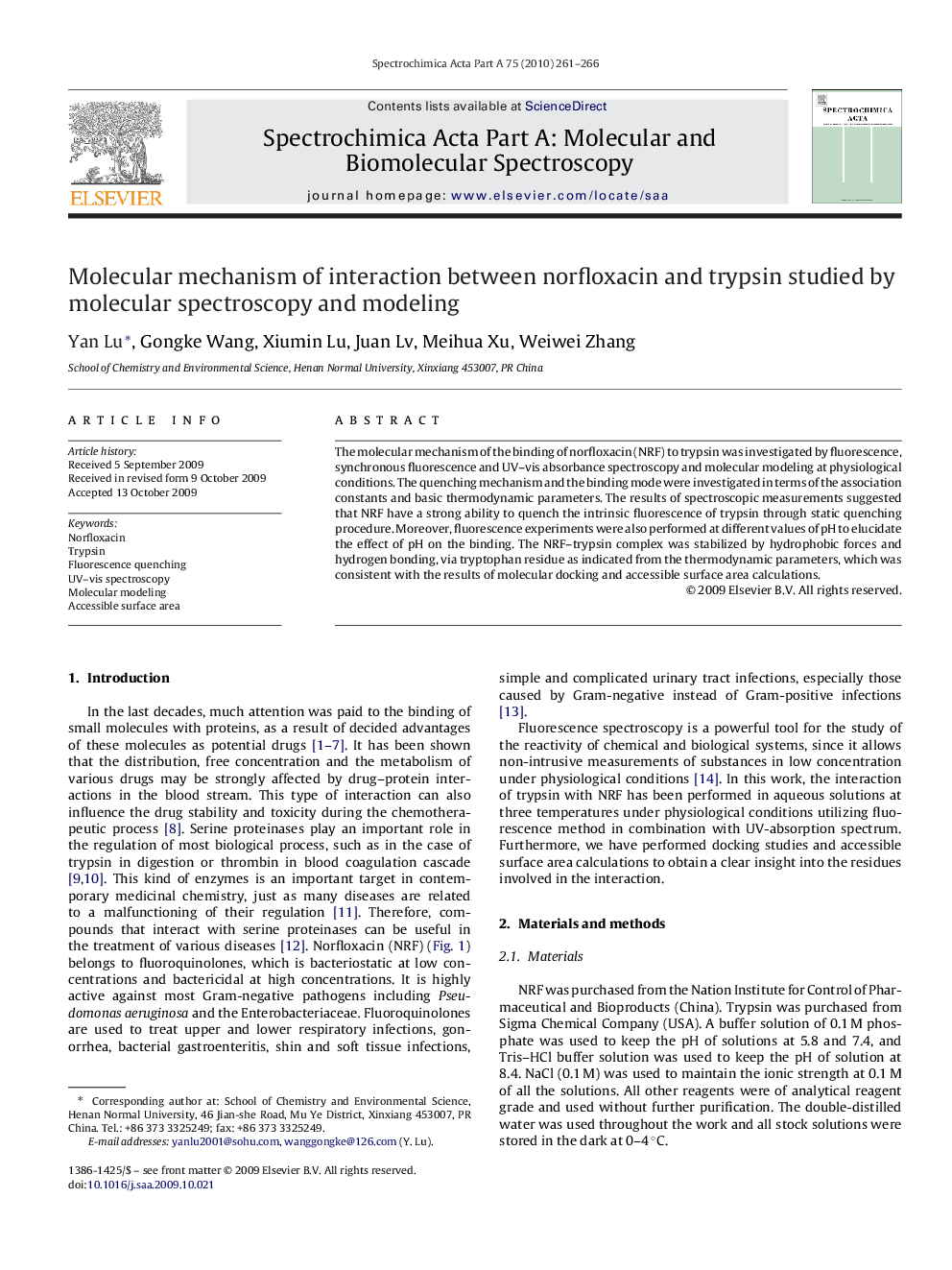| Article ID | Journal | Published Year | Pages | File Type |
|---|---|---|---|---|
| 1234213 | Spectrochimica Acta Part A: Molecular and Biomolecular Spectroscopy | 2010 | 6 Pages |
The molecular mechanism of the binding of norfloxacin (NRF) to trypsin was investigated by fluorescence, synchronous fluorescence and UV–vis absorbance spectroscopy and molecular modeling at physiological conditions. The quenching mechanism and the binding mode were investigated in terms of the association constants and basic thermodynamic parameters. The results of spectroscopic measurements suggested that NRF have a strong ability to quench the intrinsic fluorescence of trypsin through static quenching procedure. Moreover, fluorescence experiments were also performed at different values of pH to elucidate the effect of pH on the binding. The NRF–trypsin complex was stabilized by hydrophobic forces and hydrogen bonding, via tryptophan residue as indicated from the thermodynamic parameters, which was consistent with the results of molecular docking and accessible surface area calculations.
